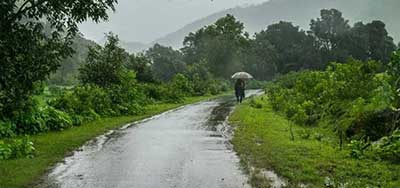Relevance: GS-3: Conservation, Environmental Pollution and Degradation, Environmental Impact Assessment.
Key Phrases: ESZs, EPA 1986, WPA 1972; Maldharis of Gujarat, and Bettakurumba of Tamilnadu;
Context
- Supreme Court recently ordered to establish 1-km Eco-Sensitive Zones
around all protected areas, wildlife sanctuaries and national parks.
- This has invited protests by farmers in Kerala who fear displacement due to the court order.
Key Highlights
What are Eco-Sensitive Zones?
- ESZ/ ESA (Eco-Sensitive Areas) are declared as per Environment Protection Act 1986.
- These were included in the National Wildlife Action Plan (2002-2016).
- 10 km of the boundaries of national parks and wildlife sanctuaries are to be notified as eco-fragile zones or Eco-Sensitive Zones (ESZ).
- This 10 Km rule is not to be strictly implemented.

What activities are allowed and prohibited in ESZs?
- Activities Prohibited in ESZ
- Commercial mining
- Sawmills - These generate dust that can harm biodiversity.
- Commercial use of wood, etc.
- Regulated activities in ESZ
- Felling of trees.
- Establishment of hotels and resorts,
- Commercial use of natural water,
- Erection of electrical cables,
- A drastic change in the agriculture system
- adopting heavy technology,
- Usage of Pesticides
- Widening of roads.
- Permitted Activities
- Ongoing agricultural or horticultural practices,
- Rainwater harvesting
- Organic farming
Need for Eco-Sensitive Zones
- Act as “shock absorbers”
- The effect of harmful anthropogenic activities happening in the vicinity of these areas remains restricted to these regions.
- In this way, they protect the Protected Areas (PAs).
- Act as Transition Zone
- These areas are meant to act as a transition zone from areas requiring higher protection to those requiring lesser protection.
- Protect the Wildlife Corridors.
- To minimize the impact of Urbanization.
- To minimize Human-Wildlife Conflict.
- It is statistically proven that animals rarely venture beyond ESZs.
- It doesn't hamper daily livelihood activities, but seeks to refine the environment area around the Protected Areas.
Concerns against ESZs
- Insecurities to livelihood rights
- As the creation of permanent structures is banned, people living in ESZ feel insecure about their livelihood activities.
- The recent notification will put 4 Lakh Acres (Kerala) under ESZ, this will affect the lives of farmers.
- In cities, it can affect the lives of low-income households who reside in these areas as they can be forced to evict.
- No Scientific basis against the current demarcation of ESZ
- Any blanket declaration of ESZ will neglect the rights of the people.
- There won’t be clarity in the measurement of the distance in case of topographical variations (eg around a hill).
- Against the participatory planning process,
- the people living around ESZ and getting affected by it haven’t been consulted.
Conclusion
- The right balance between preserving biodiversity and the livelihood rights of the people must be established. Only then, sustainable management of resources could be ensured. The example of Maldharis of Gujarat and Bettakurumba of Tamilnadu builds a case for a participative approach toward conservation. This should become the guiding light in the current crisis.
Source: Indian Express
Mains Question:
Q. What are ESZs? What are the benefits and challenges of ESZs? Suggest a suitable way forward.







